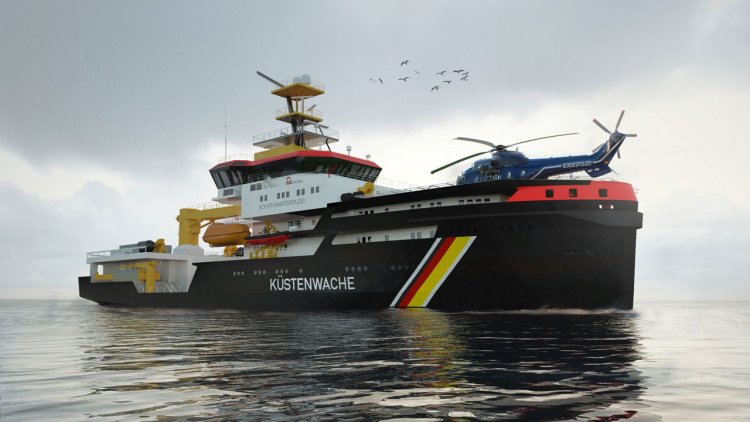Hoglund to supply LNG fuel systems for three German vessels
The customised Fuel Gas Supply Systems (FGSS) have been specially developed to allow the LNG-fuelled vessels to take on hazardous roles such as pollution control, emergency towing and firefighting

Høglund has signed a contract with Lemwerder-based shipyard Abeking & Rasmussen (A&R) to supply the Fuel Gas Supply System (FGSS) for three multipurpose vessels built for the German government, owned by Wasserstraßen- und Schifffahrtsverwaltung des Bundes.
Supervising the design and construction is the Bundesanstalt für Wasserbau. To meet the advanced specifications for the FGSS that ensures the safe operation in hazardous atmospheres, Høglund will be collaborating with Oldenburg-based HB Hunte Engineering in the development and supply of the LNG systems. This project makes A&R the only shipyard worldwide offering LNG-fuelled vessels that are qualified to operate in hazardous environments.
These 90m plus vessels will be equipped with engines generating abt 12,000kW and 145 tonnes of bollard pull, and will have a top speed greater than 15 knots. The three vessels will also be exclusively LNG-powered. Although suitable for worldwide operation, they will be deployed within the German coastline where they will carry out works on sea marks, pollution control and utilising hydroacoustic equipment as well as in pollution control, emergency towing and firefighting.
Given the intended versatility and multiple roles of the vessels and the hazardous environments they will operate in, robust safety requirements are needed. Consequently, the yard alongside their federal supervisor and owner are placing extra consideration on the design of the LNG system. To meet these specifications, A&R, Høglund and HB Hunte Engineering have collaborated to develop a dedicated gas safety concept. With Høglund taking responsibility for the overall FGSS product delivery, HB Hunte will contribute a unique LNG tank design, pipe engineering and integration of the LNG system into the wider vessel architecture. Combining skills and expertise in this way is key to supporting the greater safety measures required for special vessels of this type.
Equipping an LNG fuelled vessel to conduct waterborne firefighting, pollution control and emergency response missions is a particular challenge, as safety must be guaranteed even in hazardous atmospheres. The design of the new vessels meets Lloyds Register’s class requirements satisfying the strict rules for gas and low flashpoint fuels (IGF Code) aggravated by operation in hazardous atmosphere (gas protection operation).
Commenting on the news of the contract, Peter Morsbach, VP Sales Operations at Høglund said:
“With increased uptake of LNG as an alternative fuel, it is important that systems such as the FGSS and dedicated automation are in place to support its safe and effective use. We must take into account complex safety concerns stemming from impacts on the operational profile and environment. In this case here, the focus lies on the system’s safety concept and related design measures in terms of the tank connection spaces, gas treatment rooms, ventilation and monitoring. When entering hazardous atmospheres, the vessel switches into a “citadel mode” when external air exchange and ventilation is temporarily recessed, potentially for several hours. This important feature excludes the common way proposed by the IGF Code to treat rooms containing gas equipment”
“LNG can be a challenge on any vessel and is made harder when considering the specification for an LNG fuelled vessel that will undertake high-risk operations such as firefighting and emergency towing in heavy seas. I’m proud to say that we at Høglund together with HB Hunte, are working with A&R, WSV and BAW to combine our expertise in a collaboration that will deliver a safe, versatile and highly customized LNG solution to help the WSV fulfil its vital public service role.”



























